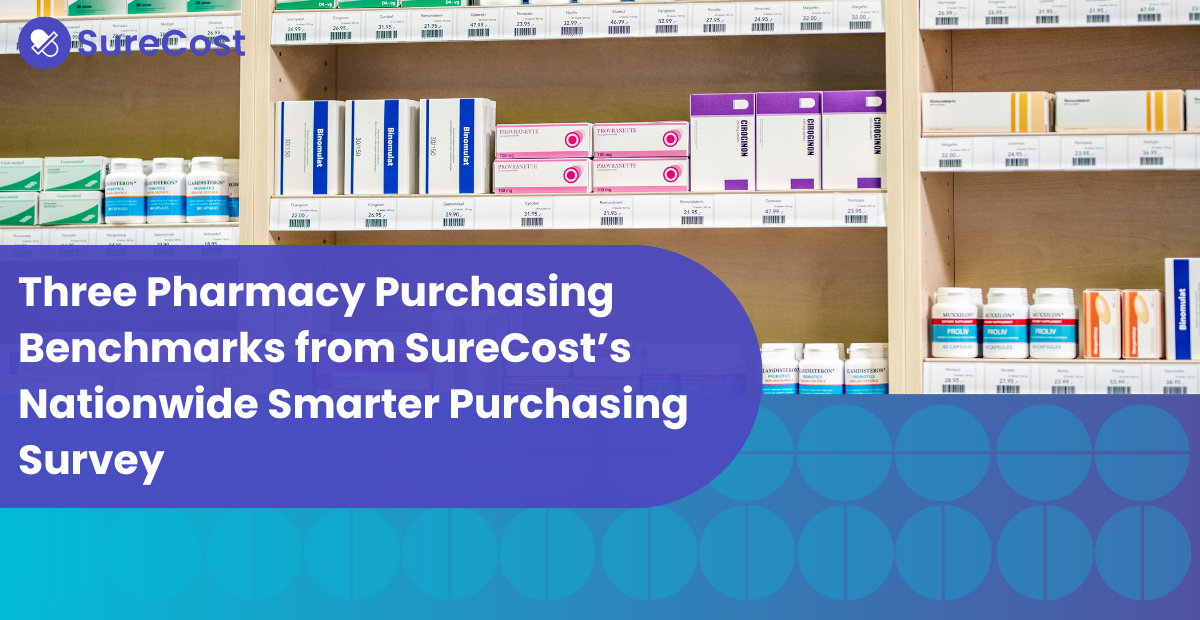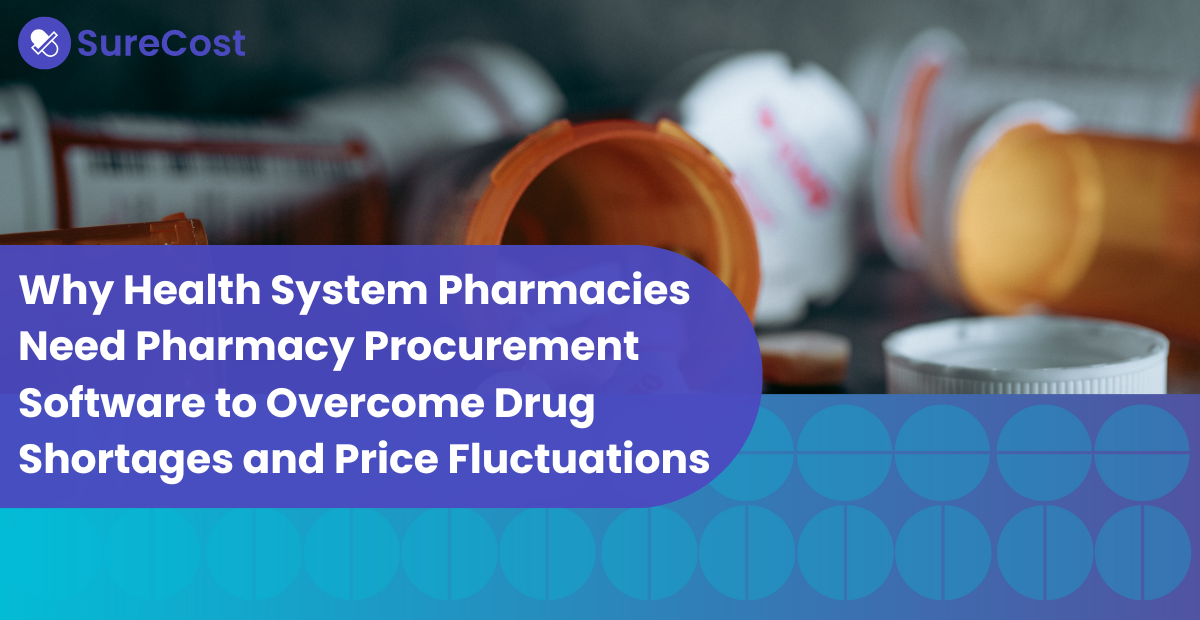Drug shortages reached a new peak in the first quarter of 2023. According to the American Society of Health-System Pharmacists, there were 309 active, ongoing drug shortages. That’s the highest number since 2014.
But a shortage of just one item can have serious consequences for your pharmacy. It doesn’t take a record-setting shortage; it just takes one out-of-stock to affect the quality of care you can offer your patients and the success of your business.
No one can predict drug shortages. Still, between supply chain issues, regulatory challenges and unexpected spikes in demand, pharmacies should be prepared for them. In this article, we’ll show you four smarter purchasing strategies to minimize their impact and how the right solution helps you implement them.
Diversify Vendors
It’s risky to always depend on a single source for all of your products. Put simply, when they’re out, they’re out! When a shortage hits, scrambling to find a vendor with the item you need complicates an already stressful situation. Plus, you’ll be onboarding a new trade partner in a hurry.
Instead, maintain a diverse portfolio of vendors. The more you diversify your vendors, the more options you’ll have when the next drug shortage hits. Your primary vendor will still handle the bulk of your procurement. But integrating secondaries gives you more purchasing options when you need them. With smarter purchasing, you can shop while ensuring compliance with your primary. You also purchase using a single solution that integrates all your vendors into a single interface (but more on that later).
Leverage Accurate Data
There’s no “best time” to be out of stock for an item. If you’re seeing an out-of-stock item because you’re trying to dispense that item, it’s already too late. You now have to spend your already limited time placing an order. That’s assuming your vendor can fill it on time. If not, as we discussed above, finding other vendors at this stage is incredibly inefficient and stressful. Last-minute orders also mean last-minute pricing; you’re probably missing out on savings opportunities.
Instead, be proactive. Based on your actual usage, address supply gaps before they escalate into shortages. Use data (not estimates or intuition) to determine when you need to replenish stock and how much you should purchase. You’ll avoid out-of-stocks, gain back time to find the best purchasing option and reduce excess stock.
Consistent and accurate inventory data is also essential. An inventory management solution lets you track both your physical inventory—the items literally on your shelves—and your perpetual inventory: a running record of everything on hand, ordered, on its way or being transferred. You’ll know exactly what you need to order, how much to order and when to order it. You can also strategize based on items with the greatest financial impact that move fastest.
Streamline Your Process
The average procurement process means bouncing between multiple vendors using different catalogs with thousands of products on multiple websites. Staff are left manually calculating the unit price for every NDC from each vendor. They then have to upload separate purchase orders for each vendor.
This is complicated enough during routine procurement. Navigating it when you’re out of a product makes it even more confusing and stressful. Rushing to find the right item to fill an out-of-stock doesn’t guarantee you’re getting the best price. You may also end up purchasing items that don’t meet your primary vendor’s contract minimums and tiers. You’ve definitely lost hours shopping, time that could have been spent with patients.
Instead, use a single solution to find the best purchasing opportunities quickly and easily. Smarter purchasing allows you and your team to:
- Access all of your vendors’ complete catalogs with updated pricing on one screen
- Find equivalents based on package size, brand/generic, unit of use and unit dose
- Quickly compare “apples-to-apples” pricing based on unit price
- Ensure primary vendor compliance as you decide how to fill out-of-stocks
- Upload one purchase order for all vendors through a single interface
Even when you’re not dealing with drug shortages, a consolidated purchasing management solution allows you to save more and work smarter while ensuring compliance. For example, you can find savings beyond the Top 200 (without flipping through multiple websites).
Automate Purchasing and Inventory Management
There’s no shortage of work for pharmacy teams every day. Many of these tasks are necessary but mundane, time-consuming and often tedious. Repetitive manual processes are prone to costly manual errors. The best example may be receiving: checking delivered products against an invoice one by one. Getting the wrong item or the wrong quantity can easily escalate into backorders.
More pharmacies are relying on automated purchasing management to enhance how they work. With a single solution logging every step of procurement—from uploading a purchasing order to verifying received items against that order with just a scan—you ensure you always receive the right product at the correct quantity for the agreed-upon price. Automating replenishment orders when you’re low on stock also helps avoid backorders and takes one more manual process off your plate.
With inventory automation, your pharmacy can automatically set min/max values based on usage and days-supply requirements. Pharmacies with multiple locations can identify stale or slow-moving products and then automate transfers to other locations. Plus, when you scan an item at receiving, inventory levels are automatically updated.
The Right Solution When Drug Shortages Hit
Smarter purchasing empowers pharmacies to mitigate the impact of drug shortages on their patients and their bottom line. It also fortifies them against other challenges. With staff shortages also rising and new DSCSA requirements on the way, pharmacies need every advantage possible to thrive in an already competitive market.
.png?w=500)



.png)


